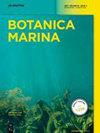为恢复摩洛哥大西洋的暖温带海洋森林而异地招募和外植贡戈拉利亚裸子植物(Fucales, Phaeophyceae)的可行性
IF 1.4
4区 生物学
Q2 MARINE & FRESHWATER BIOLOGY
引用次数: 0
摘要
褐藻林提供了许多生态系统服务,但在全球范围内却在不断减少,这促使越来越多的保护和恢复工作开始进行。最近在地中海地区进行的恢复褐藻林的尝试令人鼓舞,但在更具挑战性的大西洋条件下是否可行,尚未进行研究。在这项研究中,我们评估了在摩洛哥大西洋沿岸通过培育新种来栽培裸冠菊(Gongolaria nodicaulis)的可行性。在无水运动的受控条件下,将 G. nodicaulis 的胚胎在粘土砖上培养 26 天,使其平均长度达到 3 毫米,然后将其移植到潮间带。对移植体进行了 6 个月的监测。新苗的损失率很高,在培养 7 天内损失了约 47% 的合子,在野外 10 天内损失了 75% 的外植苗。后者可能是由于自然自交(竞争)造成的,但我们的观察表明,这在很大程度上也是由于在平静条件下栽培造成新苗对瓦的附着力较弱。移植六个月后,存活的个体达到了野生成藻的大小(平均长度为 13.5 厘米),有些甚至开始繁殖。从全球范围来看,该恢复试点的存活率、生长情况、生理状况和繁殖力表明,原地招募和外植结节藻是恢复摩洛哥大西洋森林的一种很有前景的方法。本文章由计算机程序翻译,如有差异,请以英文原文为准。
Feasibility of ex-situ recruitment and outplanting of Gongolaria nodicaulis (Fucales, Phaeophyceae) for restoration of warm temperate marine forests in Atlantic Morocco
Brown algal forests provide many ecosystem services but are declining worldwide, prompting a growing number of conservation and restoration efforts. Recent attempts to recover Cystoseira forests are encouraging in the Mediterranean, but whether this is possible in more challenging Atlantic conditions has not yet been investigated. In this study, we assess the feasibility of cultivating Gongolaria nodicaulis by producing ex-situ recruits for reforestation on the Atlantic coast of Morocco. Embryos of G. nodicaulis were cultured on clay tiles for 26 days under controlled conditions without water motion, reaching an average length of 3 mm before being outplanted on the intertidal zone. The transplants were monitored for six months. Recruits experienced high loss rates, approximately 47 % of zygotes within 7 days in culture and 75 % of outplanted seedlings within 10 days in the field. The latter might result from natural self-thinning (competition), but our observations suggested that it was also largely due to the weak attachment of recruits to the tiles resulting from cultivation under calm conditions. Six months after the transplants, the surviving individuals reached the size of wild adult algae (average length of 13.5 cm), and some even became reproductive. Globally, survival rates, growth, physiological condition and fertility in this restoration pilot suggest that ex-situ recruitment and outplanting of G. nodicaulis is a promising approach to recover forests in Atlantic Morocco.
求助全文
通过发布文献求助,成功后即可免费获取论文全文。
去求助
来源期刊

Botanica Marina
生物-海洋与淡水生物学
CiteScore
4.10
自引率
4.50%
发文量
43
期刊介绍:
Botanica Marina publishes high-quality contributions from all of the disciplines of marine botany at all levels of biological organisation from subcellular to ecosystem: chemistry and applications, genomics, physiology and ecology, phylogeny and biogeography. Research involving global or interdisciplinary interest is especially welcome. Applied science papers are appreciated, particularly when they illustrate the application of emerging conceptual issues or promote developing technologies. The journal invites state-of-the art reviews dealing with recent developments in marine botany.
 求助内容:
求助内容: 应助结果提醒方式:
应助结果提醒方式:


